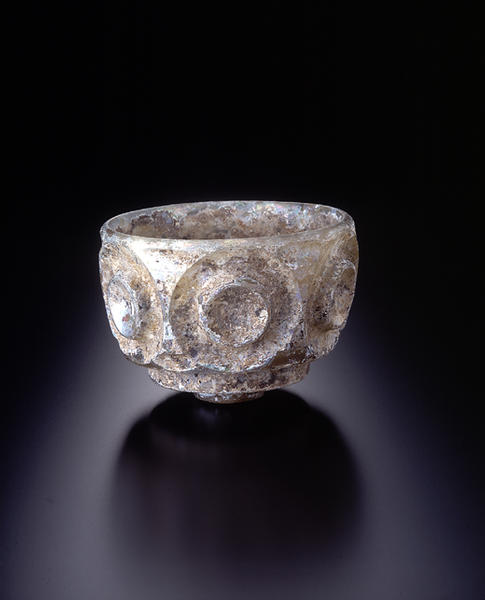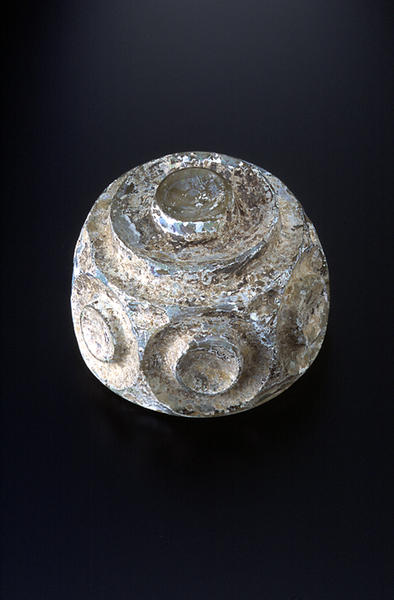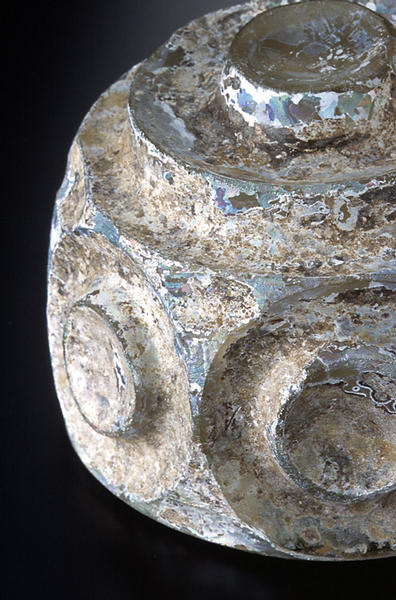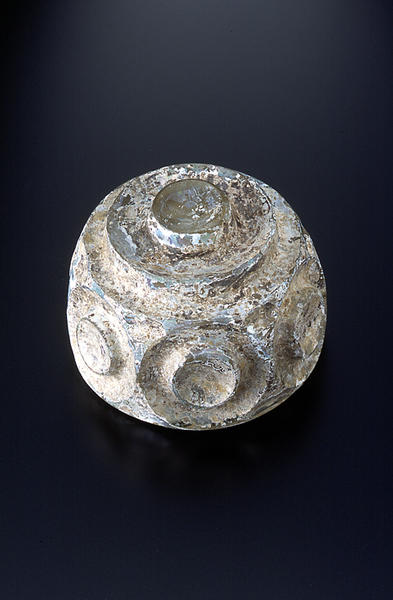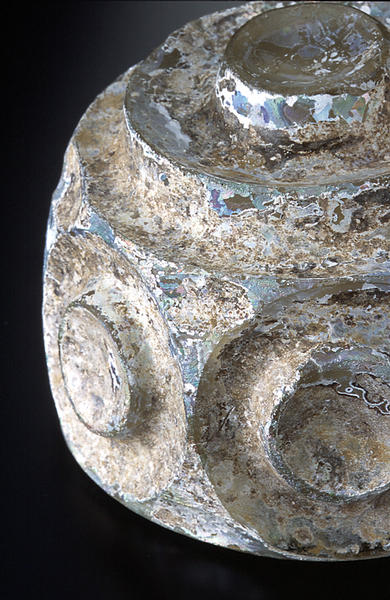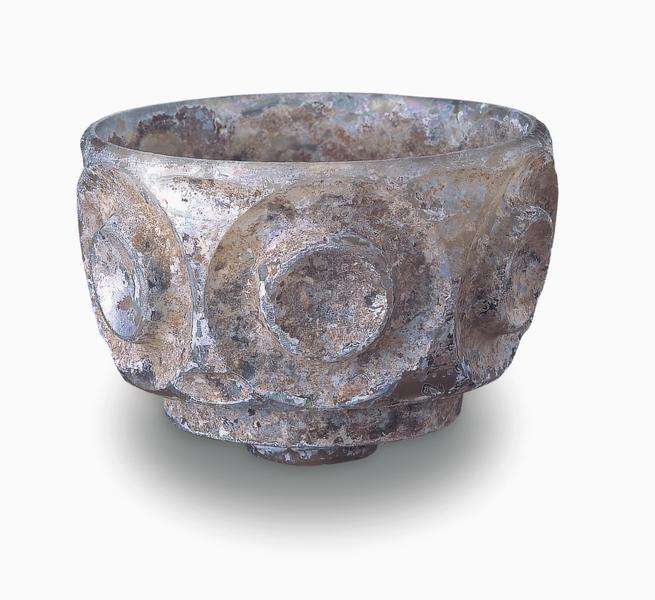二重浮出し円文切子装飾碗
- ササン朝ペルシア
- 5-7世紀
- ガラス
- H-8.2 D-12.2
ササン朝ペルシアでは、ローマ時代のカット技法を受け継ぎ、新しい意匠のカットグラスを大量に生産して輸出し、スカンジナビア半島からユーラシア大陸を横切って、日本にまで到達していた。この作品は、無色半透明のガラスを型吹きし、カットを施して成形した碗である。大きな円形切子の中に丸い突起が浮き出す文様6個が、胴部を取り巻いている。各円形カットの間には、上下に短い水平のカットを一筋ずつ入れている。胴部より幾分大きな円形カットと突起が底に削り出されており、高台代わりとなっている。口縁部は内側に丸みをおびており、各突起の周囲は面取りが施されている。泡の少ないガラスで、周りを覆う砂が取れた部分には、ピンク色、緑色、紫色などの銀化が見られる。これと同形の作品の破片が、京都の上賀茂神社から出土しており、日本に伝来していたことがわかる。
Catalogue Entry
Sasanian Persia continued the cut-glass techniques begun during the Roman period and created a massive number of cut-glass vessels with new designs and motifs for export use. These works ended up in areas as far-flung as the Scandinavian Peninsula and the Eurasian continent, with some examples even making their way to Japan. This work was blown and molded from colorless semi-translucent glass and then decorated with cut work. The large circular cuts produced six round protrusions that circle the body of the bowl. The circular cuts are then surrounded on top and bottom by a row of small horizontal cuts. In place of a formal foot arrangement, the base of the bowl is cut with somewhat larger circular cuts and a protrusion than those on the side of the bowl. A rounded band circles the inside of the mouth rim area, and the areas around each protrusion are beveled. The glass has very few bubble inclusions and there is pink, green and purple iridescence on the areas where sand has been removed. Fragments of a similarly shaped vessel have been excavated at the Kami-Gamo Shrine in Kyoto, indicating that this vessel type arrived in Japan in antiquity.
